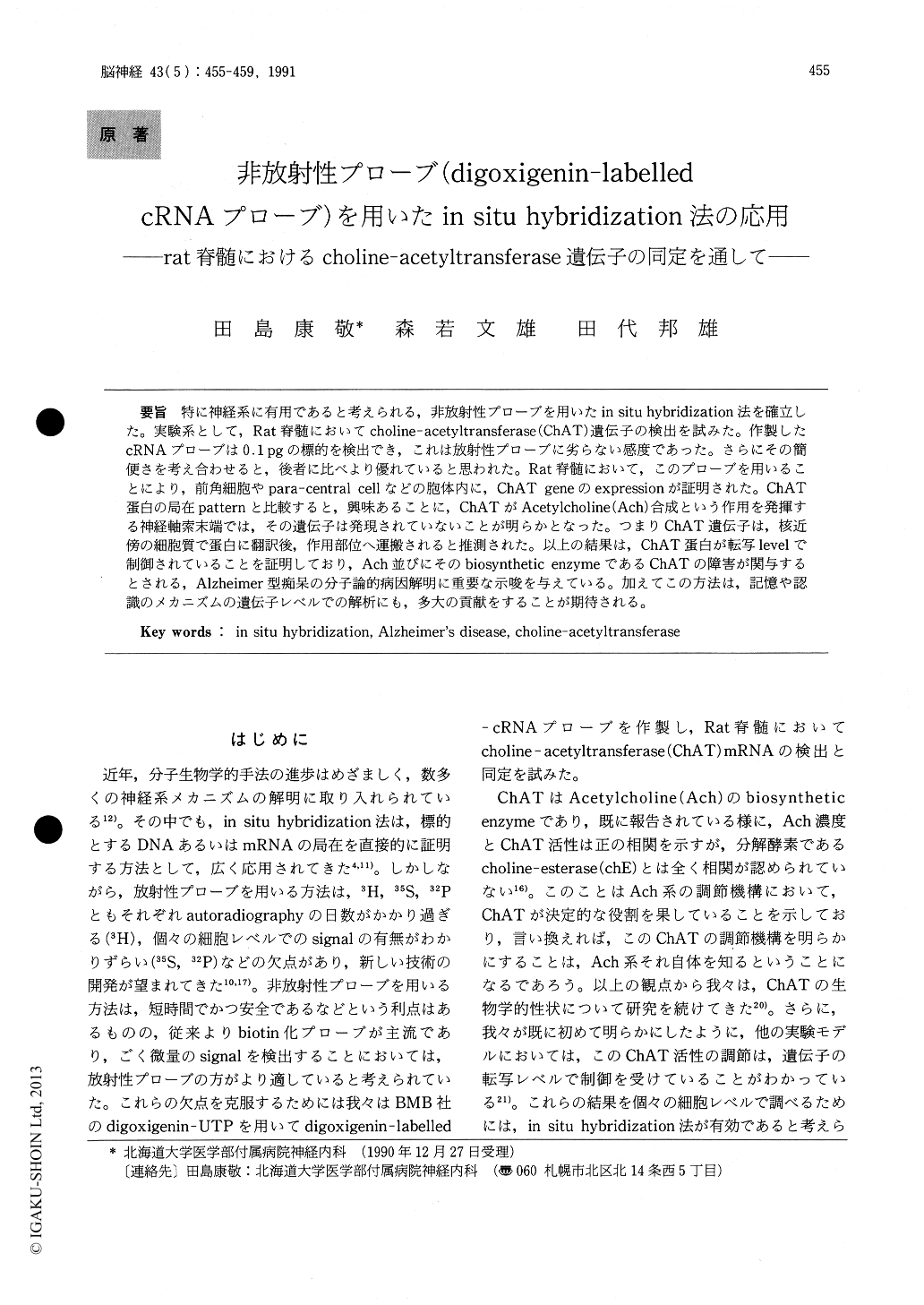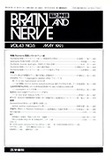Japanese
English
- 有料閲覧
- Abstract 文献概要
- 1ページ目 Look Inside
特に神経系に有用であると考えられる,非放射性プローブを用いたin situ hybridization法を確立した。実験系として,Rat脊髄においてcholine-acetyltransferase(ChAT)遺伝子の検出を試みた。作製したcRNAプローブは0.1pgの標的を検出でき,これは放射性プローブに劣らない感度であった。さらにその簡便さを考え合わせると,後者に比べより優れていると思われた。Rat脊髄において,このプローブを用いることにより,前角細胞やpara-central cellなどの胞体内に,ChAT geneのexpressionが証明された。ChAT蛋白の局在patternと比較すると,興味あることに,ChATがAcetylcholine(Ach)合成という作用を発揮する神経軸索末端では,その遺伝子は発現されていないことが明らかとなった。つまりChAT遺伝子は,核近傍の細胞質で蛋白に翻訳後,作用部位へ運搬されると推測された。以上の結果は,ChAT蛋白が転写levelで制御されていることを証明しており,Ach並びにそのbiosynthetic enzymeであるChATの障害が関与するとされる,Alzheimer型痴呆の分子論的病因解明に重要な示唆を与えている。加えてこの方法は,記憶や認識のメカニズムの遺伝子レベルでの解析にも,多大の貢献をすることが期待される。
We have established a new in situ hybridization method utilizing non-radiolabeled probes. Using this technique, we have attempted to detect the choline-acetyltransferase (ChAT) gene expression in rat spinal cord. It was revealed that the ChAT gene was expressed mainly in the cytoplasm of motor neurons and para-central cells. On the other hand, ChAT protein has already been reported to exhibit a diffused distribution in the cholinergic fibers. Comparing the localization of the ChAT gene with that of the ChAT protein, the ChAT gene was shown to exist only in the cytoplasm surround-ing the nuclei. However, the ChAT gene was not expressed in axon terminals where ChAT protein synthesized acetylcholine. This result indicases that the ChAT gene is translated into protein around the nuclei and is thereafter transported toward the action site. We now think that there are two different patterns of neurotransmitter gene distribu-tion.
After mRNA is translated into protein, this pro-tein is carried to the action site. On the other hand, mRNA itself is delivered to the action site and translated into protein. After the translation, this protein form exerts its own function. The ChAT gene is suspected as belonging to the first category of gene distribution. In Alzheimer disease, not only the acetylcholine system but also its biosynthetic enzyme, ChAT, system are supposedly destroyed by an unknown factor. If we can clarify the regulatory mechanism of the ChAT gene, this will lead us to the molecular pathogenesis of Alzheimer disease. Additionally, this new in situ hybridization tech-nique should shed some light on the complex brain networks.

Copyright © 1991, Igaku-Shoin Ltd. All rights reserved.


